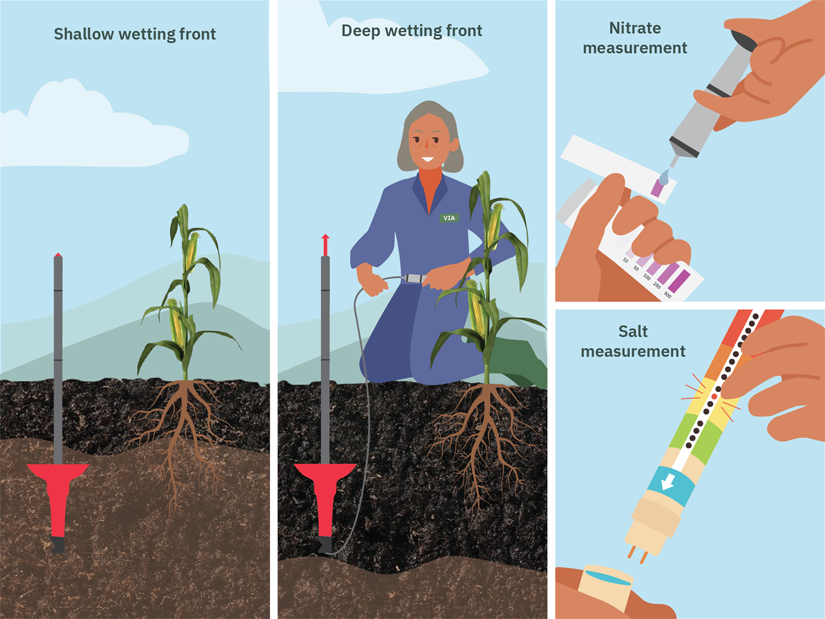It takes a bit of experience to determine optimal placement depths for the WFDs. Ideally, a shallow WFD would respond to most irrigation events, showing that water has moved well into the rootzone. A deeper WFD should respond more rarely, as it may mean that water has moved beyond the rootzone.
Nitrate levels rise after application of nitrogen containing fertilisers, manure and compost, and also due to the mineralisation of organic matter. Nitrate levels fall due to plant uptake and leaching. When nitrate levels are high, irrigation amounts should be reduced to minimise the chance of leaching.
If the electrical conductivity of irrigation water is the yellow zone or above, salt will likely accumulate in the root zone. Different crops have different sensitivity to salt (EC). Salt should be leached before reaching the level where crop yields decline.
When using the Chameleon Wi-Fi System in conjunction with the WFD, the change in solutes can be visualised together with the water pattern on the VIA data platform (WFD data setup instructions).
This allows you to see how irrigation practice, as shown by the blue, green and red colours, affects the accumulation and leaching of salt and nitrate.
The concentration of solute measured from the WFD is a measure of the nitrate and salt that is leaving the soil layer above and moving into the soil layer below. Thus, if nitrate or salt readings are high at a particular depth, it means that these solutes are being pushed deeper into the soil.




